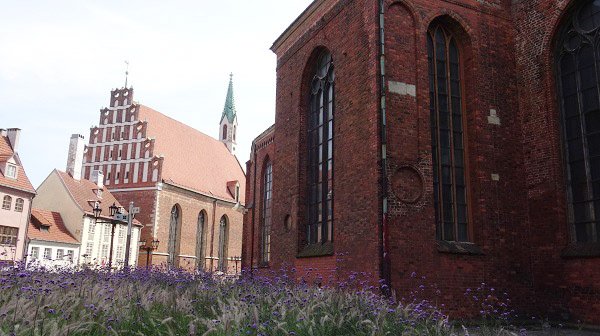Gothic is one of the most iconic styles of Latvian old towns, especially visible in Riga. Characterized by tall roof gables, small and often tall arched windows, red brick facades it was the style of Medieval traders and crusaders.
Gothic was brought to Latvia by Christian Germans in the 12th century who have conquered the country. Many of the best surviving Gothic buildings are churches (although their interiors are often more modern). Not all gothic-looking churches are Medieval however as it became popular to imitate the gothic style in the 19th century.

While in Medieval era nearly every townhouse must have been Gothic, few of them remained as they were replaced by new buildings as the centuries passed. What exists now are often some Gothic details together with those of later styles, or Gothic facades restored in the 20th century. Gothic forms may still however be visible in numerous townhouses of Riga Old Town. Such buildings are usually narrow and long, with just a small facade facing the nearby street.

Additionally, many of the ruins of the crusader castles are Gothic. Unlike other buildings, the castles were typically abandoned, offering a glimpse into authentic (though ruined) buildings of a gothic Medieval Latvia.

Some of the oldest gothic buildings of Latvia also have Romanesque influences. That was an older style of Christian Europe that was already a passing trend by the time Christian knights have conquered Latvia. Romanesque buildings look less graceful and more massive as they do not use Medieval building technologies that allowed Gothic buildings to have more slender walls.
